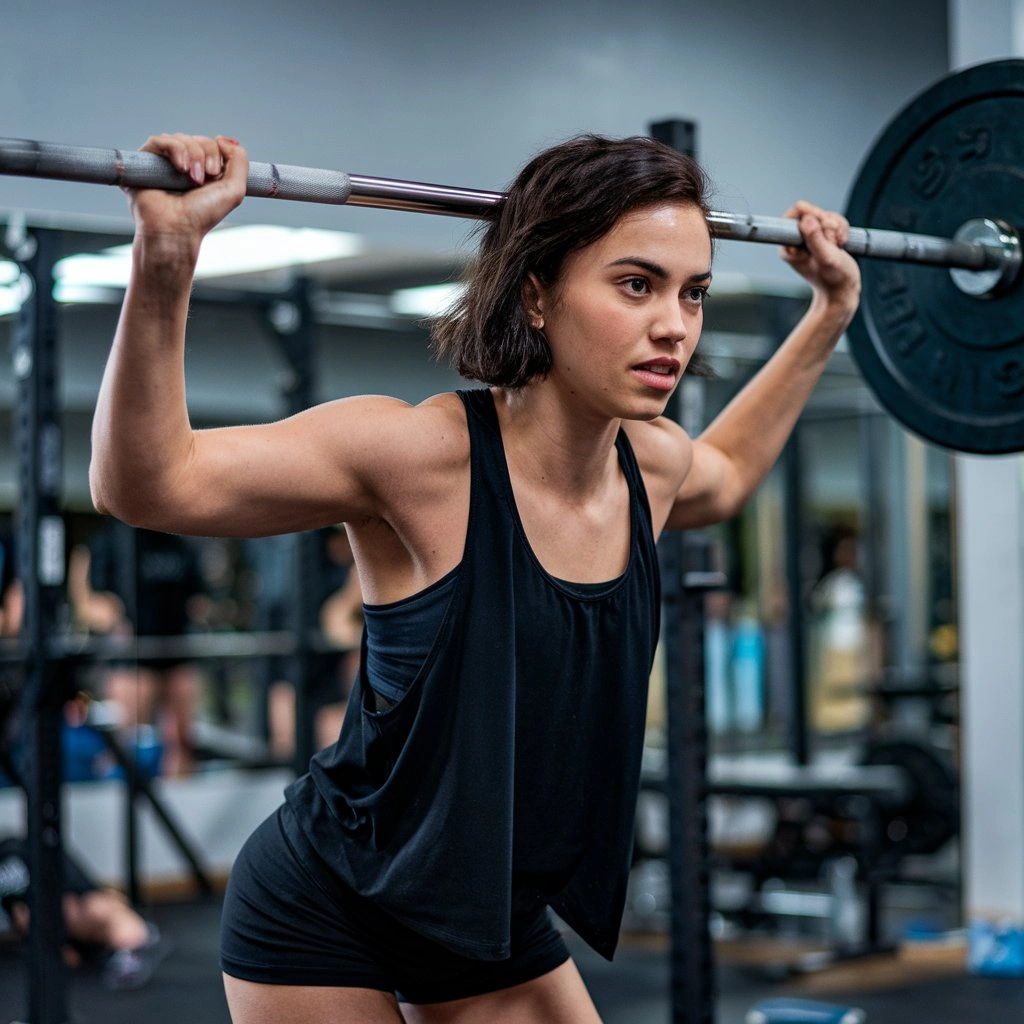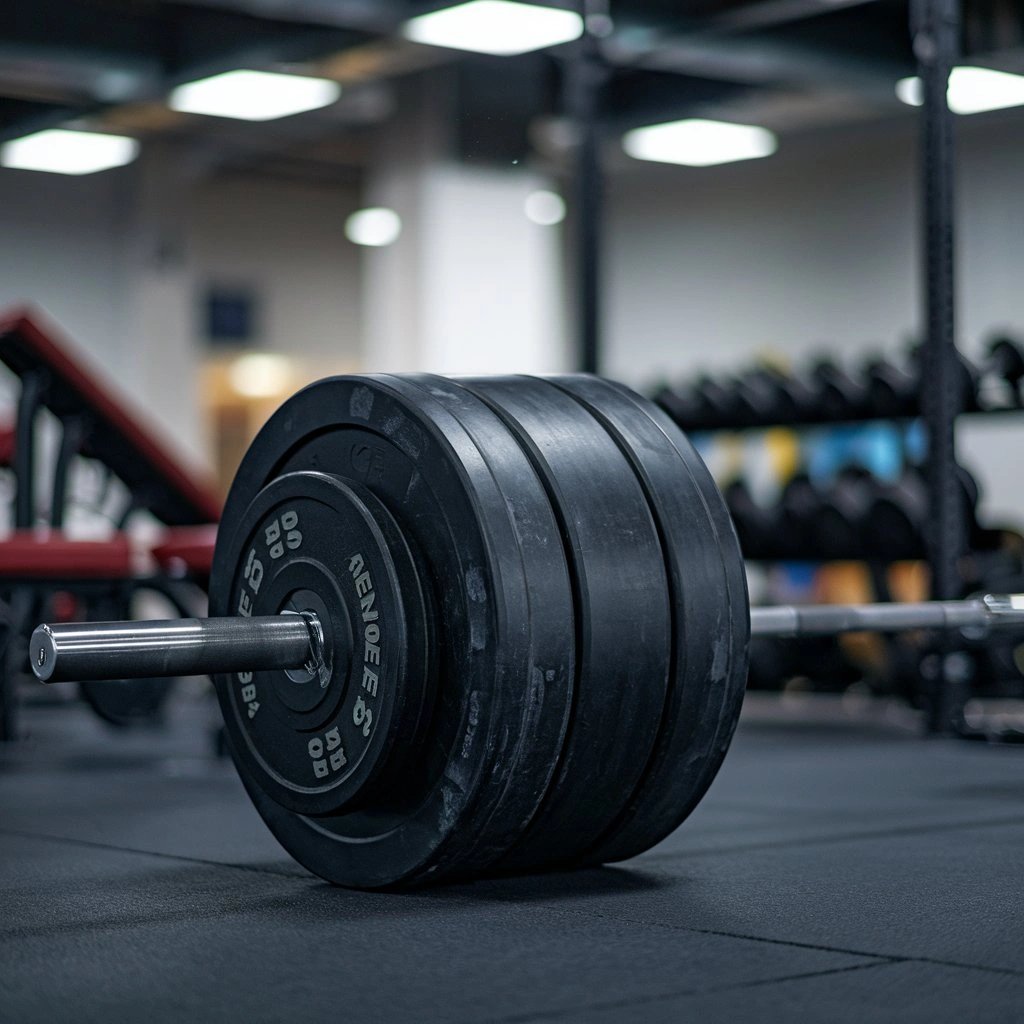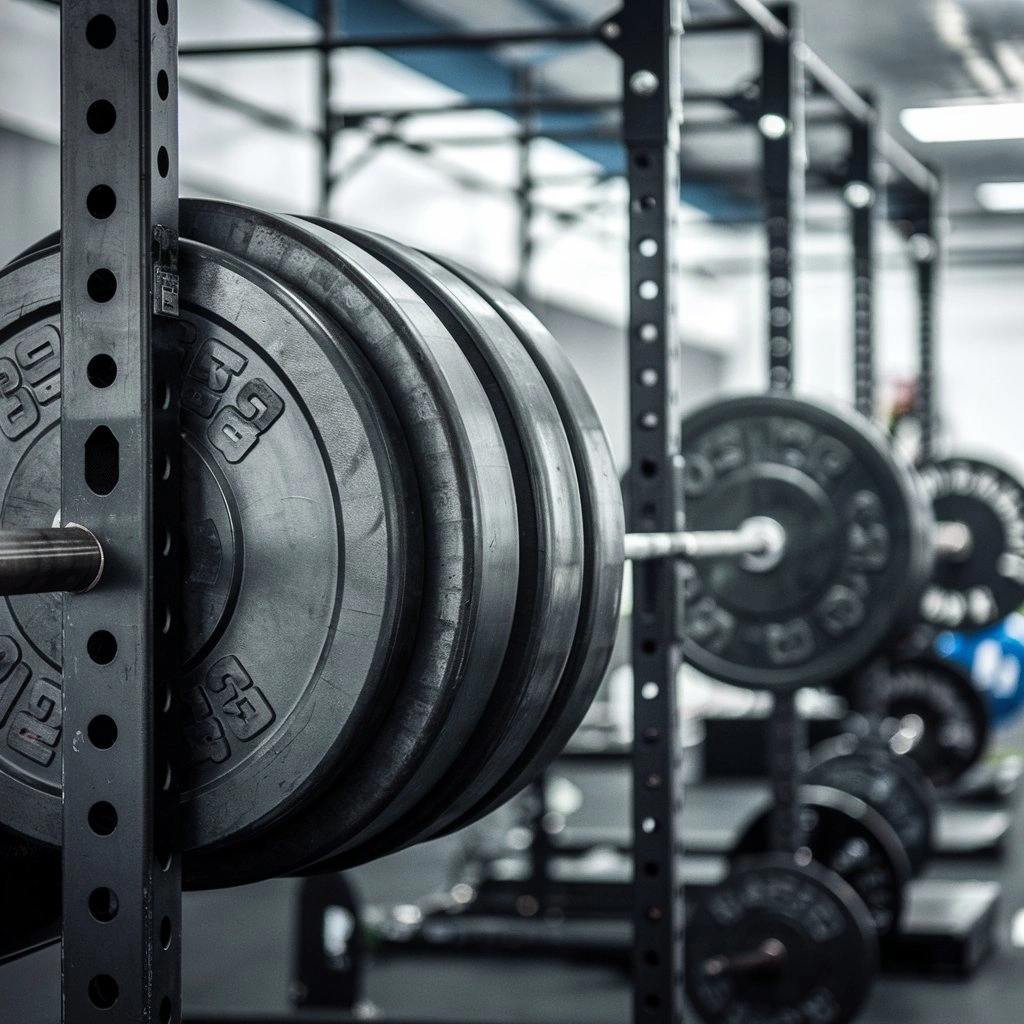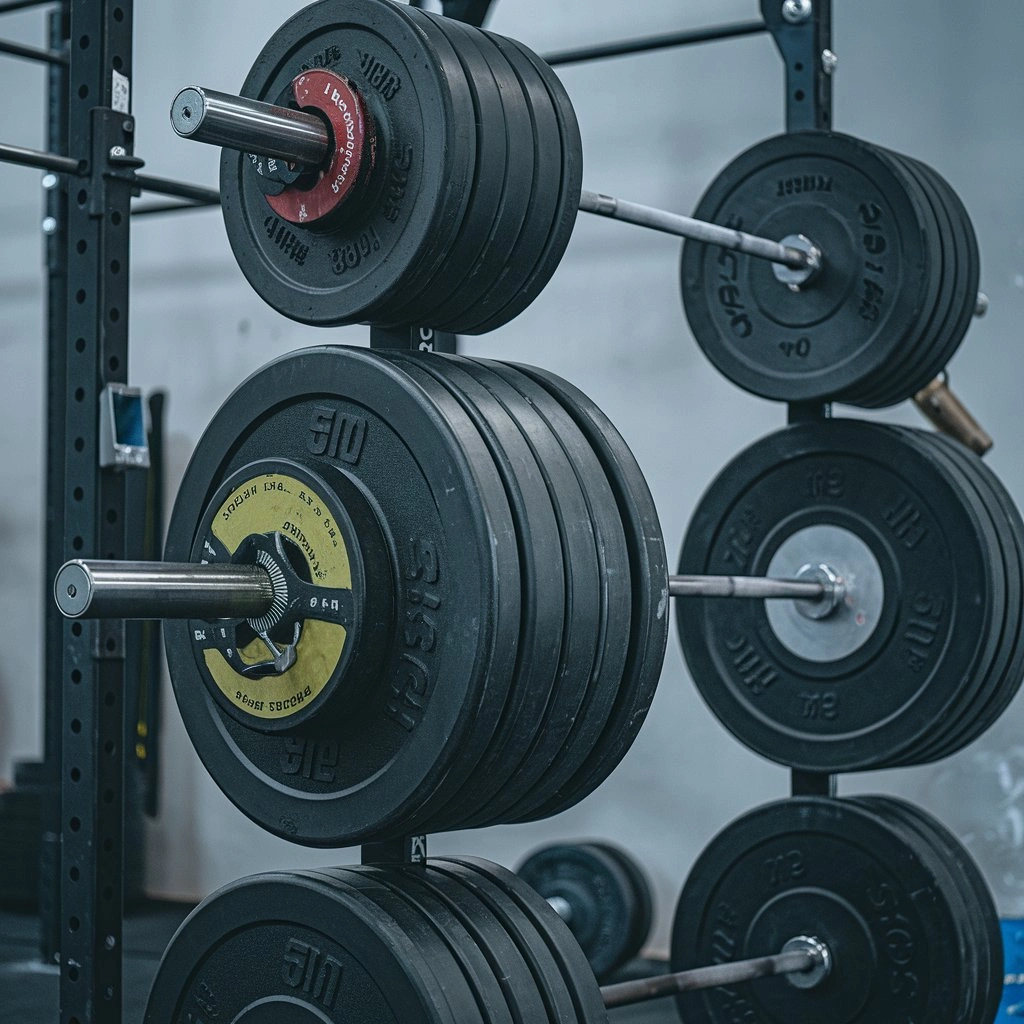In the world of strength training and fitness, few tools are as iconic and vital as the barbell. The weight plates are key too. They are the backbone of many workouts. They let lifters build strength, gain muscle, and reach their fitness goals.
This guide aims to explain barbells and weight plates. It covers their parts and many uses in training. Are you a seasoned lifter looking to refine your technique?
Or are you a newcomer eager to start your fitness journey? This guide will give you the knowledge and insight to make smart choices. It will also help you get the most from your training.
Join us. We will delve into the world of Barbells and weight plates. We will explore their anatomy, use, safety, and care. We’ll reveal the details of each piece of equipment.
They range from the old iron plates to the new bumper plates used by Olympic athletes. We’ll also help you navigate the many options.
You might be setting up a home gym or a commercial facility. Or, you could just want to improve your training. In any case, knowing the details of barbells and weight plates is crucial. Let this guide be your trusted companion. It will help you on your journey to strength, health, and vitality. So, grab your chalk. Tighten your lifting belt. Prepare to dive deep into the world of barbells and Weight Plates. Your fitness journey starts here.
Understanding Barbells
Types of Barbells
Standard Barbells
- Characteristics and Specifications
- Typically 1 inch in diameter for the shaft.
- Weight capacity ranges from 100 lbs to 400 lbs.
- Usually made of solid steel with a chrome or black oxide finish.
- Straight bar design with non-rotating sleeves.
- Common Uses and Limitations
- Ideal for basic strength training exercises like bench presses, curls, and rows.
- Suitable for home gyms and beginners due to affordability and simplicity.
- Limited in weight capacity and may not be compatible with Olympic-sized weight plates.
- The lack of rotating sleeves may restrict movements like cleans or snatches.
Olympic Barbells
- Features and Specifications
- Typically 2 inches in diameter for the shaft.
- Weight capacity ranges from 700 lbs to 1500 lbs.
- Made of high-quality alloy steel with a black oxide or chrome finish.
- Features rotating sleeves with needle bearings or bushings for smooth spin.
- Advantages and Applications
- Designed for serious strength training and Olympic lifting.
- Compatible with Olympic-sized weight plates, allowing for heavier loads.
- Rotating sleeves enable dynamic movements like cleans, snatches, and jerks.
- Commonly used in commercial gyms, CrossFit boxes, and Olympic weightlifting competitions.
Components of a Barbell
Barbell Shaft
- Materials, Lengths, and Diameters
- Barbell shafts are usually made of steel. They may be carbon steel, stainless steel, or alloy steel. Each material offers different levels of durability, tensile strength, and corrosion resistance.
- Standard barbell shafts are about 7 feet long. Specialty bars may vary in length. Shorter barbells, such as those used in home gyms or for specific exercises, may measure 5 feet or less.
- Barbell shafts come in two standard diameters. The diameters are 28mm (for men’s bars) and 25mm (for women’s bars). Specialty bars may have different diameters. This is to fit specific grip preferences or training goals.
- Knurling Patterns and Grip Considerations
- Knurling
The knurling pattern on a barbell shaft provides grip and traction during lifting. Standard patterns have a center knurl for back squats. They have traditional knurling for grip during deadlifts and presses. - Grip Considerations
Barbells vary in knurling depth and aggressiveness. They cater to different grip comfort and security preferences. Some bars may have aggressive knurling for maximum grip. Others have smoother knurling for comfort.
- Knurling
Barbell Sleeves
- Types of Sleeves (Bushing vs. Bearing)
- Bushing Sleeves
Bushing sleeves use bushings. These are usually made of bronze or composites. They help the sleeve rotate. They provide smooth spin and are commonly found in mid-range to high-end barbells. - Bearing Sleeves
Bearing sleeves use needle or ball bearings. They cut friction and allow faster, smoother rotation. They are in higher-end Olympic barbells. These bars are for dynamic movements, like cleans and snatches.
- Bushing Sleeves
- Importance of Sleeve Rotation and Spin
- Sleeve Rotation
Barbell sleeves can rotate separately from the shaft. This is crucial for exercises like cleans, snatches, and jerks. Proper sleeve rotation allows for smoother transitions. It also reduces strain on the lifter’s wrists and elbows. - Spin
The spin of the sleeves refers to their ability to rotate freely. This happens when weight plates are loaded onto the barbell. A smooth spin reduces resistance during lifts. It helps keep momentum, especially in Olympic lifts and fast workouts.
- Sleeve Rotation

Exploring Weight Plates
Types of Weight Plates
Iron Plates
- Traditional Cast Iron Plates
- Description: Iron plates are classic, durable-weight plates made from cast iron. They typically feature a simple design with a center hole for mounting on a barbell.
- Pros
- Durability
Cast iron plates are known for being durable. They last a long time and resist wear and tear. - Cost-Effective
Iron plates are often cheaper than other types of weight plates. This makes them a popular choice for home gyms and budget gyms. - Cons
- Noise
Iron plates can be noisy when dropped or moved. This may matter for users in shared spaces or apartments. - Prone to Chipping
While durable, cast iron plates can chip or rust over time if not properly maintained.
- Noise
- Durability
Bumper Plates
- Rubber-Coated Plates
- Description
Bumper plates are made from solid rubber and feature a steel or metal insert at the center. They are made to be dropped without damaging floors or equipment. This makes them great for Olympic lifting and functional training. - Benefits of Olympic Lifting and Functional Training
- Floor Protection
Bumper plates absorb impact. They reduce noise when dropped. They protect floors and equipment from damage. - Consistent Diameter
Bumper plates are usually the same diameter no matter their weight. This allows for a consistent bar height during lifts. - Versatility
Bumper plates can be used for many exercises. These include Olympic lifts, CrossFit workouts, and functional movements.
- Floor Protection
- Description
Plate Sizes and Specifications
Standard Plates
- Inch-Based Weights and Dimensions
- Description
Standard plates are typically measured in pounds and feature a 1-inch center hole. They come in various sizes and weights, ranging from 2.5 lbs to 45 lbs. - Compatibility with Standard Barbells
Standard plates are designed to fit on standard barbells with a 1-inch diameter shaft. They are commonly used in home gyms and beginner weightlifting setups.
- Description
Olympic Plates
- Metric-Based Weights and Dimensions
- Description: Olympic plates are measured in kilograms and feature a 2-inch center hole. They come in various sizes and weights, ranging from 1.25 kg to 25 kg.
- Compatibility with Olympic Barbells
Olympic plates are designed to fit on Olympic barbells with a 2-inch diameter shaft. They are commonly used in commercial gyms, CrossFit boxes, and Olympic weightlifting competitions.

Safety and Maintenance
Proper Form and Safety Practices
Importance of Proper Lifting Technique
- Proper form is critical. It prevents injuries and boosts workouts.
- Emphasize the need for a neutral spine. Also, for bracing the core and using controlled movements when lifting.
Common Form Mistakes and How to Avoid Them
- Identify common errors. These include rounding the back in deadlifts. Also, flaring the elbows in bench presses and using too much momentum in lifts.
- Guide how to correct these mistakes through cueing, visualization, and targeted exercises.
Safety Precautions During Lifting Sessions
- Stress the need to warm up well before lifting. It prepares the muscles, joints, and nerves for exercise.
- I recommend using collars to secure weight plates. They ensure the plates don’t slide off during lifts.
- Encourage using a spotter for heavy lifts. This is especially true for exercises like squats or bench presses.
Maintenance of Equipment
Cleaning and Upkeep of Barbells
- Explain why regular cleaning is important. It stops rust, corrosion, and debris buildup on the barbell shaft.
- The guide explains how to clean the barbell. You will need mild detergent, a brush, and a cloth. Pay attention to the knurling and sleeves.
Storage Considerations for Weight Plates
- Recommend storing weight plates in a dry, heated place. This prevents rust and decay.
- Avoid stacking weight plates on top of each other. It can deform and damage them.
Inspection for Wear and Tear
- Encourage regular inspection of equipment for signs of wear, damage, or malfunction.
- Discuss potential areas of concern such as bent or cracked barbell shafts, loose collars, or chipped weight plates.
- Guide how to address issues quickly. This is to prevent more damage and to ensure safety during use.
Choosing the Right Equipment
Considerations for Beginners
Recommended Starter Barbells and Plates
- This is a guide on choosing barbells and weight plates for beginners. The gear should be durable, versatile, and affordable.
- Suggest options such as standard barbells with cast iron plates. Or, entry-level Olympic barbell sets with rubber-coated bumper plates.
Budget-Friendly Options for Home Gyms
- Discuss cost-effective alternatives for beginners setting up a home gym on a budget.
- I recommend shopping for used or refurbished equipment. Or, they can explore entry-level barbell and plate packages. They can also invest in versatile equipment that can grow with their fitness journey.

Advanced Options for Serious Lifters
High-quality barbells and Plates for Commercial Settings
- Highlight the top barbells and weight plates. They are for commercial gyms, CrossFit boxes, or pro training facilities.
- Discuss features such as higher weight capacities. Also, talk about enhanced durability and advanced sleeve rotation. These features are for heavy and frequent use.
Specialty Bars and Plates for Specific Training Needs
- Explore specialized barbells and plates designed for specific training modalities or athlete requirements.
- Discuss options. For example, consider powerlifting bars for maximum strength training. Or, weightlifting bars for Olympic lifts. You could also consider specialty bars. For example, trap bars or safety squat bars are for targeted exercises.
Conclusion
In the world of strength training, the barbell and weight plates are loyal friends. They guide us through the highs and lows of our fitness journeys. We end this guide. We reflect on the deep meaning of these timeless tools and the change they can bring.
We’ve explored barbells and weight plates. We’ve found their many types and key parts. They play a critical role in building strength, toughness, and growth.
We’ve seen the classic allure of iron plates. We’ve also seen the dynamic versatility of bumper plates. We’ve given you the knowledge. It will help you navigate well. You are pursuing your fitness goals.
But beyond just equipment. We’ve delved into the heart of safety and maintenance. We emphasize the need for proper form, careful upkeep, and attentive care.
We forged these practices in the crucible of technique and discipline. They prevent injury and make equipment last. They keep our journey steadfast and enduring.
As you start your odyssey of strength and self-discovery. Let the lessons from these pages be your guiding light. You may be a novice lifter taking your first steps.
Or, you may be a veteran pushing human limits. May the wisdom given here fuel your passion. It will ignite your determination and drive you to greatness.
In the symphony of clanging plates and barbell rhythms, may you find strength. Not just physical prowess, but also inner resiliency and resolve. In the sweaty gym, we forge not just steel bodies. We also forge iron hearts and indomitable minds.
So, as you return to the hallowed halls of the gym, remember the lessons and wisdom gained. And keep in mind the journey ahead. Embrace the challenge, savor the struggle, and revel in the triumphs that await. For with each lift, each rep, and each step forward, you draw ever closer to the pinnacle of your potential.
Frequently Asked Questions
What are barbells and weight plates used for?
- Barbells and weight plates are essential tools in strength training and weightlifting. Barbells are the main lifting apparatus. People load weight plates onto them. This makes exercises like squats, deadlifts, and bench presses harder.
What are the main types of barbells?
- The two main types of barbells are standard barbells and Olympic barbells. Standard barbells have a 1-inch shaft. They are good for basic strength training. Olympic barbells have a 2-inch shaft. They are designed for advanced lifting and Olympic-style lifts.
What are the differences between iron plates and bumper plates?
- Iron plates are traditional weight plates made from cast iron. Bumper plates are made from solid rubber with a metal insert. Bumper plates are meant to be dropped. They won’t damage floors or equipment. That’s why they are ideal for Olympic lifting and functional training.
How do I choose the right barbell and weight plates for my home gym?
- Consider factors such as your budget and the limits of your space. Also, think about your training goals and experience level. Use these factors when choosing barbells and weight plates for your home gym. Beginners may choose standard barbells and iron plates for their low cost. Experienced lifters may prefer Olympic barbells. They like bumper plates for their versatility and durability.
How do I maintain and care for my barbells and weight plates?
- Regular maintenance is essential to prolonging the lifespan of your equipment. This includes cleaning the barbell shaft often to prevent rust and corrosion. Also, store weight plates in a dry place to prevent damage. Finally, inspect equipment for wear and tear.
Can I use bumper plates on a standard barbell?
- Bumper plates are designed to fit Olympic barbells with a 2-inch diameter shaft. You can use bumper plates on a standard barbell with a 1-inch diameter shaft. But, you may need adapters to ensure a secure fit. However, it’s best to use bumper plates with Olympic barbells. This is for top performance and safety.
Where can I purchase barbells and weight plates?
- You can buy barbells and weight plates at sporting goods stores. You can also get them at fitness equipment retailers. You can also buy them on online fitness equipment websites. Choose reputable brands and quality equipment. They must meet safety standards. This is key for good performance and durability.

